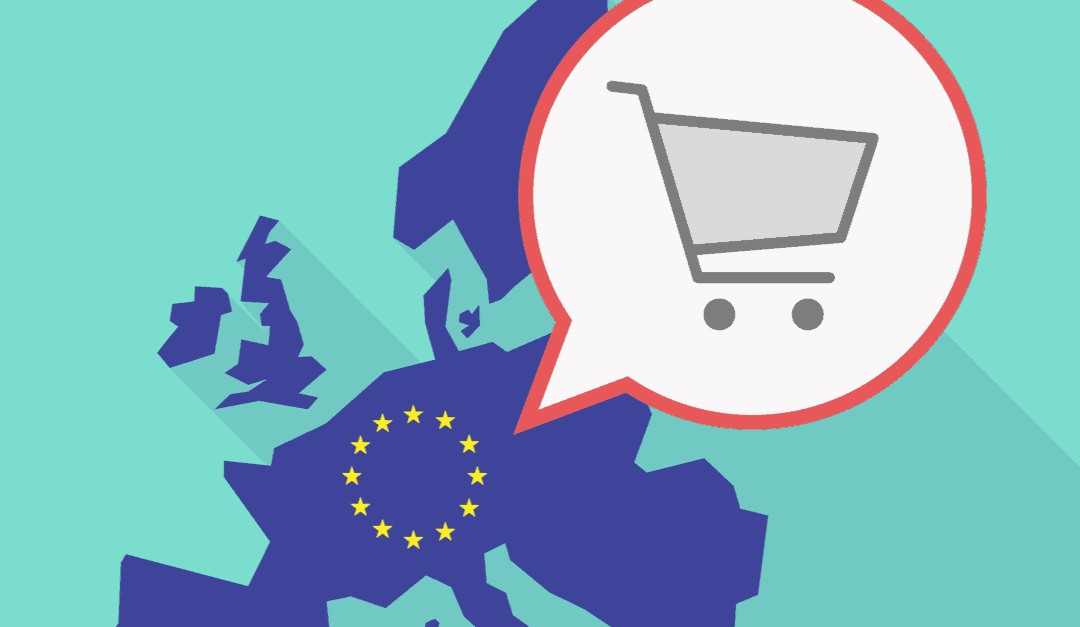As of yesterday, the new EU VAT rules for ecommerce are now in effect. These rules constitute a massive shift in VAT collection in the EU and certainly affect ecommerce sellers all over the world. Regular readers of our article will be well aware of these changes. Whilst we have written many articles on the topic, now seems a good time to provide you with a recap and a summary of all the main changes that the EU is implementing and advise you on how to adjust your operations.
Distance Selling Thresholds Abolished
Previously every country in the EU had its own distance selling threshold, meaning that sellers had to meticulously monitor how many sales they were making to each country. The new EU VAT rules have abolished these thresholds and have replaced them with a blanket threshold of €10,000 for every country. Below this threshold, EU-based sellers will be able to submit all their tax for the supply of goods and services to the state in which they are established.
Sellers based outside the EU will owe VAT for every sale they make into the EU. However, the IOSS will help to reduce this burden, but more on that later.
Low-Consignment Relief Abolished
The VAT threshold of €22 is being abolished, meaning that all goods imported to the EU will be subject to VAT, regardless of their value. This will be really difficult for some sellers and may mean that they will have to reassess their prices. This change has come into place as research has shown that the EU misses out on about €7 billion in VAT payments annually due to this exemption.
Online Marketplaces Now Have More VAT Responsibility
One of the main aspects of the new EU VAT rules is that the EU is now placing the responsibility on online marketplaces to collect the VAT on sales that fit a certain criteria when they are deemed to be ‘facilitating’ the trade. This obligation relates to sales that are being imported and have a value below €150 by EU and non-EU sellers alike. They are also responsible for the all the sales within the EU made by non-EU ecommerce sellers regardless of the value. Please be aware that this only applies to B2C sales. Online marketplaces will not have any responsibility when it comes to B2B sales.
For more information on what sales online marketplaces will be responsible for, and what is meant by ‘facilitating’ a trade, you can read our article on the topic here. We also have an article on using the OSS & IOSS with a marketplace.
The IOSS & OSS
The OSS & IOSS are the biggest changes that have come into effect with the new EU VAT rules. In a nutshell, the OSS allows sellers based inside and outside the EU to report all their sales to one country in a quarterly VAT return. The IOSS works similarly, but for import VAT and for sales up to €150. The IOSS also requires monthly returns, and you may need an EU-based intermediary depending on which country you register with.
These two schemes are very complicated. If you want to know more, you can check out our article here which goes into much more detail. If you require assistance signing up to either of the schemes, you can contact us via the contact form at the side of the article (underneath it if you are reading this on a mobile device). These schemes are optional but are definitely recommended.
We Can Help You With The New EU VAT Rules
These rules may seem complicated but complying with them is imperative if you wish to continue trading with the EU.
As experts in tax services for ecommerce sellers, we would be more than happy to help you comply.
Our long history of working with ecommerce sellers, especially those who use Amazon and eBay, means we can guide you through every step of the registration process – so please do not hesitate to send us an e-mail at enquiries@jpaccountant.com or contact us through social media to receive a quote today. In addition, we would be more than happy to help you register for UK & EU VAT and file your UK & EU VAT returns, and help you comply with VAT in case your account faces any issues.
